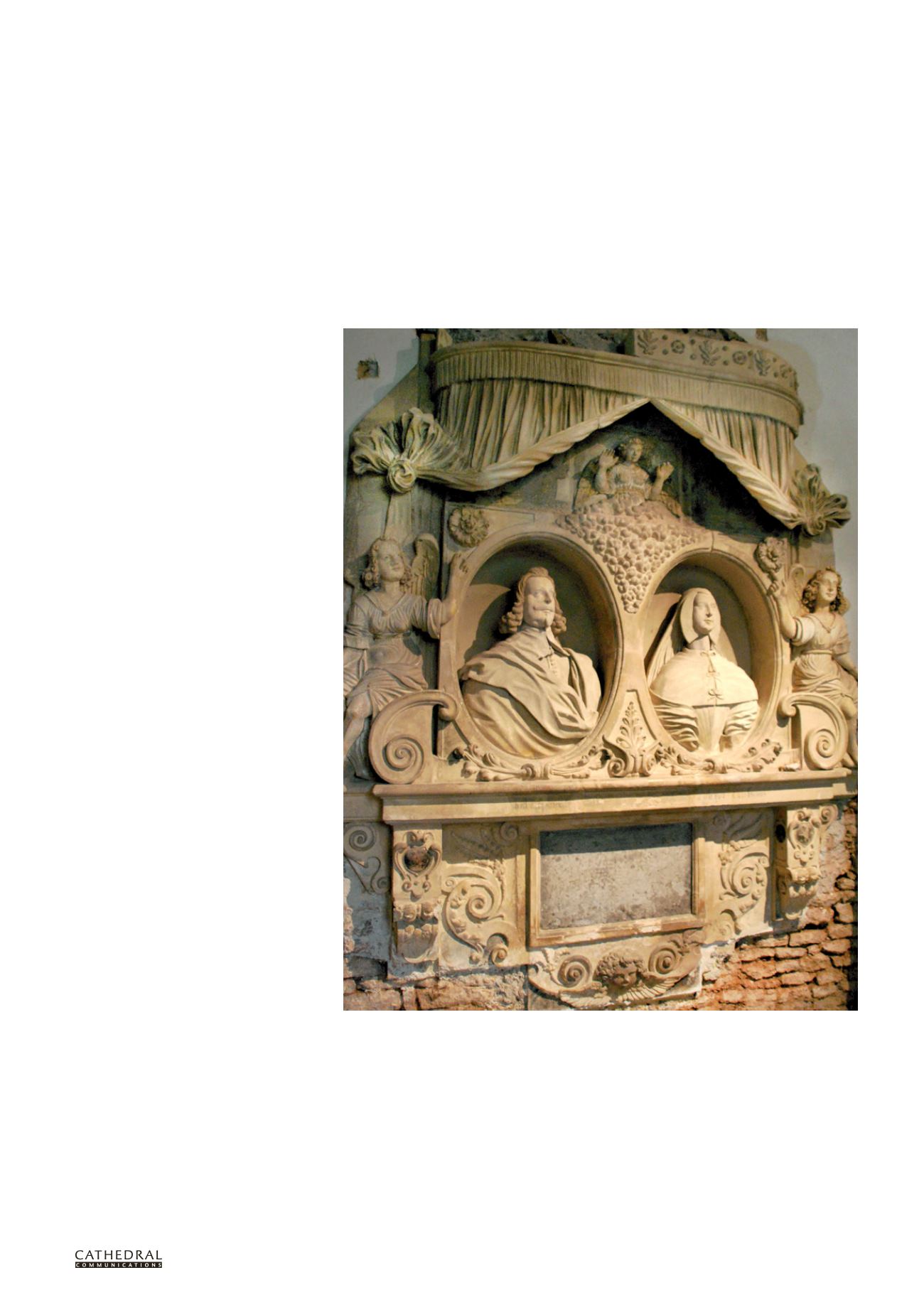

BCD SPECIAL REPORT ON
HISTORIC CHURCHES
24
TH ANNUAL EDITION
13
CHURCH MONUMENTS and
THEIR ENVIRONMENT
Sally Strachey
O
UR NATION’S churches,
cathedrals and abbeys contain
the largest collection of fine art
in the country. These priceless heritage
assets, often by the greatest designers and
craftsmen of their day, are still displayed
in the setting for which they were
designed. It would therefore be a mistake
to think of them as being in any way less
important or less authentic works of art
than those on show in museums and art
galleries. However, church monuments
should not be seen as beautiful objects
alone: they provide a living record of
religious, political and social history and
are an invaluable and engaging learning
resource. They allow us to touch the
lives of those they commemorate and
to understand something of how those
characters and their families fit into the
complex tapestry of history, and they
deserve our attention.
Because church monuments are not
in museum conditions but inside historic
buildings in varying states of repair,
careful attention should always be paid
to understanding the building envelope
and the internal environment. Recently,
Sally Strachey Historic Conservation has
been lucky enough to work on a number
of fascinating monuments across the
country. In every case the deterioration of
structural integrity and surface condition
was largely due to the monument’s
environment. Improving and monitoring
their surroundings forms a critical part of
their conservation.
DAMP AND ITS EFFECTS
Church monuments are occasionally
freestanding but it is more usual to find
them built into the church fabric and
their condition is inevitably a reflection
of the surrounding environment. Few
churches are used all the time, so almost
all are subject to intermittent heating and
ventilation, which can have a significant
impact on the microclimate around
the monument. Furthermore, most
churches have been subject to reordering,
particularly during the 19th century,
The monument to Sir Edward and Lady Francis Rodney on the west wall of the Rodney Chapel, St Leonard's
Church, Rodney Stoke, Somerset: investigation windows were opened up above the monument (top left and
right) to ensure there was no evidence of early plaster and decorative schemes, and the hard plaster was
removed at lower levels.
and this has resulted in monuments of
all shapes and sizes being dismantled,
relocated and rebuilt, often in ever-
decreasing space.
The construction methods used
can be complex. Materials include
alabaster and marble and a variety
of limestones, sandstones and other
regional building stones, held together
with an internal structure of iron fixings.
Larger monuments may also contain a
filler material (rubble for example) for
structural support. The surfaces and
inscription panels may also retain areas


















